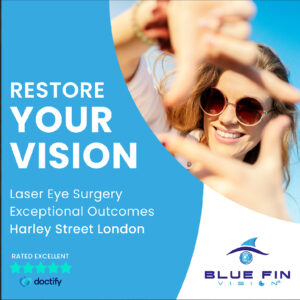Refractive lens exchange (RLE) has grown in popularity as an option for individuals who are not candidates for other vision correction methods such as LASIK, or for those who wish to address multiple refractive errors at once. While LASIK and similar procedures focus on reshaping the cornea to alter the way light enters the eye, RLE offers a more Refractive lens exchange comprehensive solution by directly altering the lens, which is a key component of how the eye focuses light.

One of the major advantages of RLE over LASIK is its ability to address a broader range of vision problems, including presbyopia, a condition that causes difficulty focusing on close objects as people age. Many people in their 40s or older experience presbyopia, and RLE can provide them with a lasting solution to this issue by replacing their natural lens with one that can focus at multiple distances. This is particularly advantageous for people who no longer wish to wear reading glasses or who struggle with bifocals or progressive lenses.
In addition to treating presbyopia, RLE can also correct other refractive errors such as nearsightedness (myopia) and farsightedness (hyperopia). Depending on the type of intraocular lens (IOL) chosen, the procedure can improve vision at both near and far distances. For example, multifocal IOLs allow patients to see clearly at various distances, providing a more natural, glasses-free experience. Alternatively, accommodating IOLs mimic the natural focusing ability of the eye, offering an even more flexible range of vision.
Another benefit of RLE is its durability. Unlike other vision correction methods that may require follow-up treatments or lens replacement, an IOL typically lasts for the rest of the patient’s life. This is particularly appealing for individuals who have grown tired of the ongoing need for glasses or contacts. Once the IOL is implanted, most patients find that their vision stabilizes, and they no longer need to worry about changing prescriptions or maintaining corrective eyewear.
While the procedure offers many advantages, it does require careful consideration. It is essential for candidates to have a thorough pre-operative consultation to ensure they are suitable for the surgery. A complete eye exam and a discussion of the patient’s lifestyle and vision needs will help the surgeon recommend the most appropriate type of IOL. For instance, those who work in specific environments or who are involved in activities like driving at night may need to consider the specific benefits and potential drawbacks of different IOLs.
Like any surgery, RLE carries some risk of complications, although these are rare. Potential issues include infection, lens dislocation, or the need for further surgeries if the lens does not achieve the desired result. However, when performed by an experienced surgeon, the risks are minimal, and most patients experience significant improvement in their quality of life post-surgery.
In conclusion, refractive lens exchange is a promising alternative to traditional vision correction methods, offering a more permanent solution to a range of refractive issues, especially for older adults experiencing presbyopia. The ability to address both near and far vision simultaneously, along with the long-term benefits of not relying on glasses or contacts, makes RLE an appealing choice for many people seeking freedom from corrective eyewear. However, like all surgical procedures, it requires careful consideration and consultation with a qualified eye care professional to ensure the best possible outcome.
